We had heard many good things about Talampaya national park south of Villa Unión, but it was unclear whether the road that leads to the park would allow us to continue to Mendoza. Also, we felt that we needed a break from the hasty routine of the last days that had allowed for little more than riding and sleeping. So we took a day to visit the park unloaded, come back to Villa Unión and keep following the Ruta 40 the next day. Riding without the panniers was great fun, but thanks to the blazing heat and mostly hostile winds, it was no rest day at all.
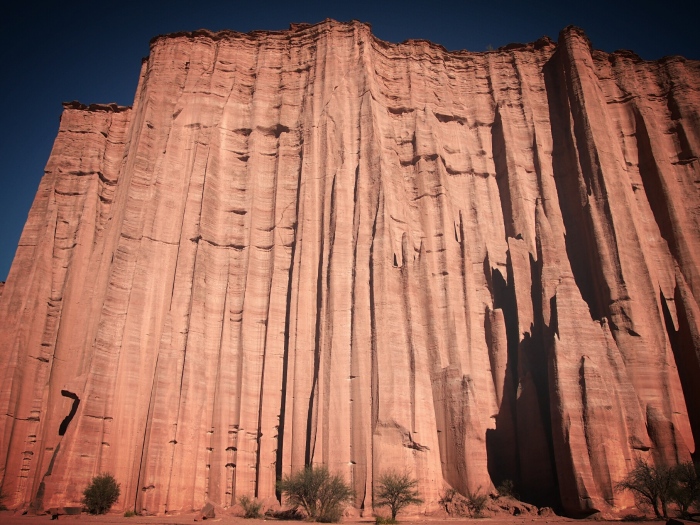
The walls of the Cañón de Talampaya are absolutely stunning.
When we awoke from our slumber in Villa Unión, we had no idea what our next step would be. We wanted to visit Talampaya national park to the south, but could not figure out whether there was a cyclable road connecting to the Ruta 40 afterwards. Everybody we asked told us something different, and as usually in these cases, our maps contradicted each other. We felt it was a lot of risk to go south and trust the free paper map we still had from the tourist information at Belén. While that map clearly showed a road that went through the national park and back to the Ruta 40 in a loop, other sources showed no road at all, or only fragments of one. Would we find a similar situation as on the Cuesta de Miranda, namely a road that suddenly ended? And if that was the case, would we be able to cycle through the untamed terrain? Would the thorns on the desert ground shred our tires to pieces?
We did what we felt was the smartest thing: we leaned back, took a deep breath and agreed on a spontaneous rest day. After all, we had been covering more kilometers during the last days than ever before and were making excellent progress. For once, we were ahead of schedule. Also, we had been talking about how much fun it would be to ride unloaded for a change on more than one occasion, and so we seized the opportunity without hesitation. We packed up for a light tour to Talampaya and back: snacks, refreshments and the remainder of our money, since the national park could only be accessed via guided tours. We hoped to join an excursion by foot. There were also cycling tours, but we had had our heads so deep in cycling during the last days that we longed for a break from the two wheels.
We beamed with joy as we zipped out of town and into the open desert. At first, we were amazed by how light and swift our bicycles felt without the heavy load. But soon, strong headwinds slowed us down and our speed diminished quickly. In fact, we were not much faster than our usual pace when fully loaded!
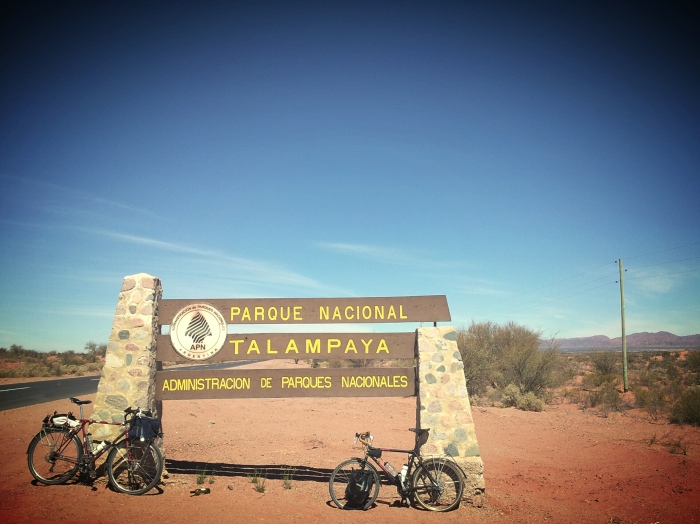
On the way into Talampaya national park, we only stopped once to refill our bottles and take this picture.
When we arrived at the park entrance more than an hour later than intended, it turned out that the guides for the walking and cycling tours had called it an early day. We grunted with disappointment since the only option left was taking a bus tour. Riding in a coach through the desert seemed like the last thing we wanted to do. We had seen the heavily laden tourist buses roar past us in the Quebrada de las Conchas, and we did not feel like one of the passengers spilling out at every stop only to take photos of everything within eyesight, usually tilted or with a finger showing in the picture. Or worse yet: selfies.
In the end, we decided to jump on the bus, and we are so glad that we overcame our skepticism. The actual Cañón de Talampaya was miles away from the park entrance, so we would have missed the park’s main attraction had we just followed the main road through the natural park, as we had initially planned. The canyon itself was filled with deep, fine sand, so cycling through it would have been impossible for the most part. And the bus was not crammed with tourists, as we had feared: in effect, we were the only passengers save for a young couple from Buenos Aires. And finally, the bus stopped every few minutes and left us to explore the surroundings by foot, so it felt close enough to a walking tour. All in all, we spent almost two hours in the Cañón and enjoyed every minute of it.
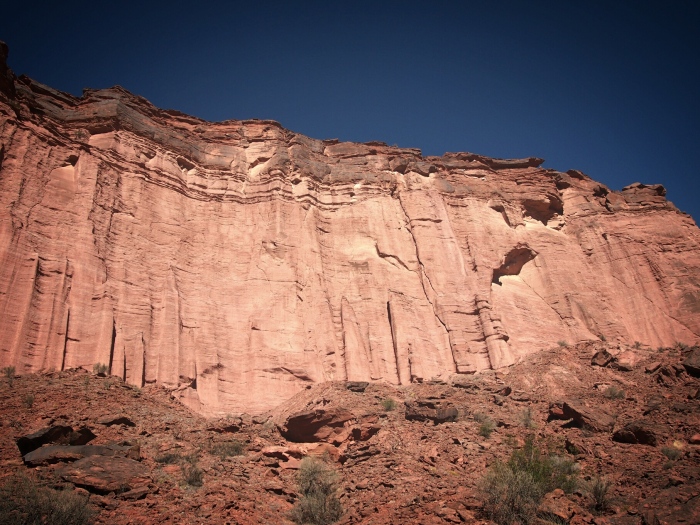
The edges of the Cañón loomed high above us, washed out by sudden floods during rain season.
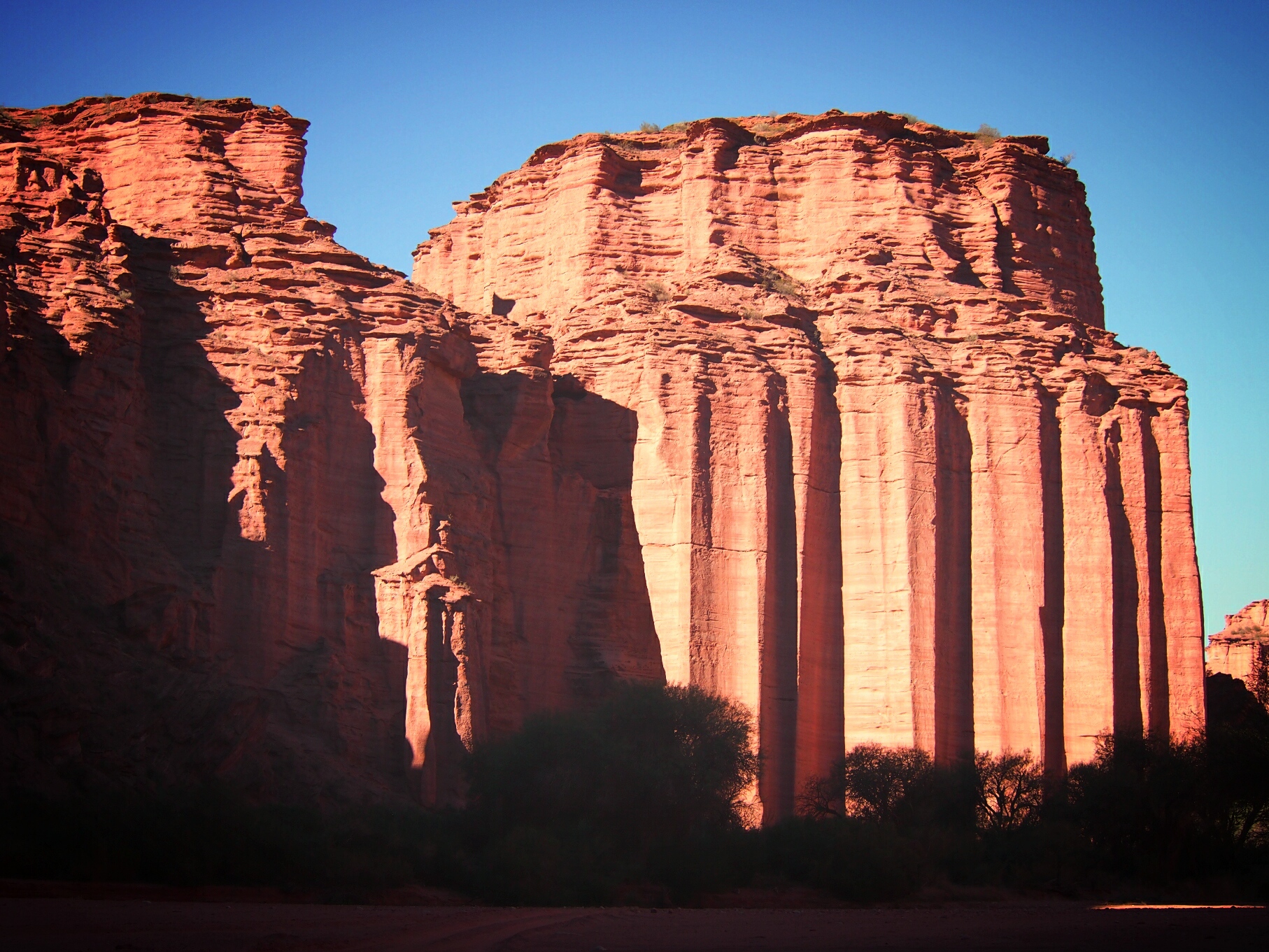
We thoroughly immersed ourselves in the alien beauty of this place.
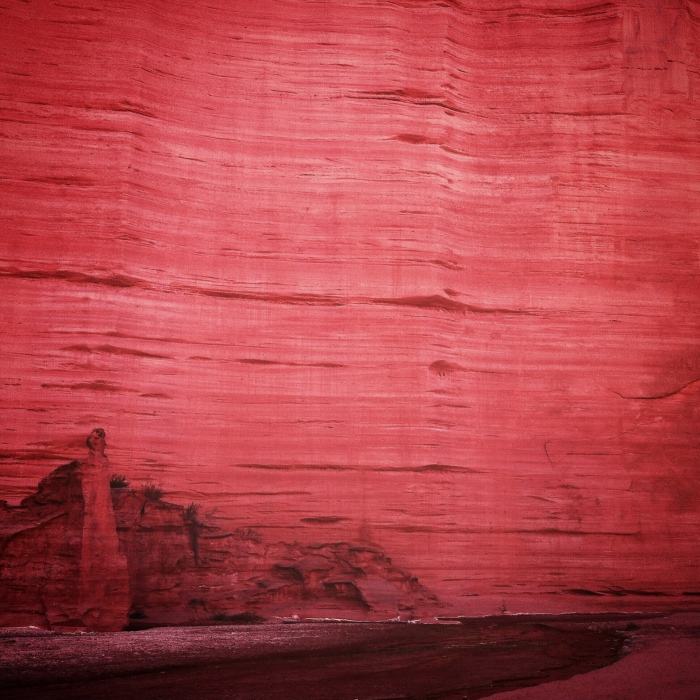
Long ago, the walls of the canyon had been formed by layers upon layers of river sediment.
We turned back to Villa Unión after a quick lemonade at the entrance to the national park. We had looked at the Argentinian flag waving in the strong wind and kept our fingers crossed: it pointed exactly in the direction of the road home. Would we have the tailwind we had been hoping for for so long?
Our hopes were not in vain: minutes later, we were pushed across the flat desert at speeds normally attained only on steep downhills, and we pedaled easily in the highest gear. This was what it must have felt like going in the opposite direction during the horrible headwinds in southern Uruguay! But the fun soon ended. First, the pedaling gradually became harder. Then, we had to shift down to keep going. In the end, we were ducking into a strangely hot headwind, going even slower than on the way to the national park in the morning. Our only solace was the once again incredibly beautiful sunset and the rising of the full moon over the desert.
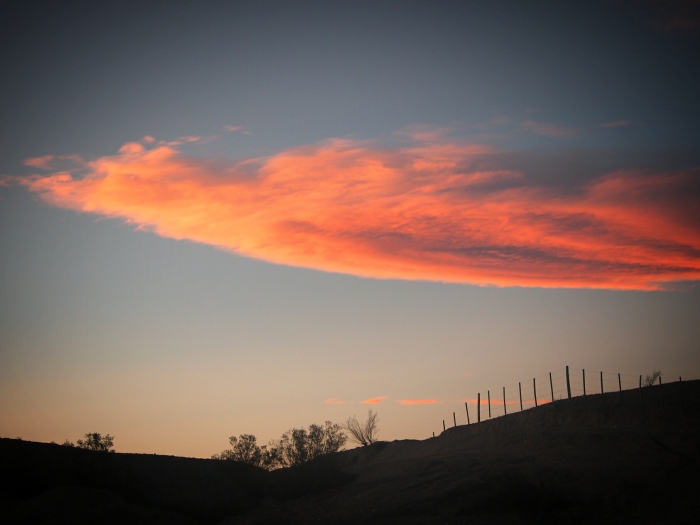
Riding into a desert sunset never gets old.
The moonshine was so bright that we could see our own shadows spinning next to us. Visiting Talampaya had been hard work in the end, but well worth it. The stages before us promised to be the longest to date, but we felt we could tackle them with the sort of renewed vigor that only a change of perspective can bring.
Pingback: Meet the zonda – la vuelta sudamericana